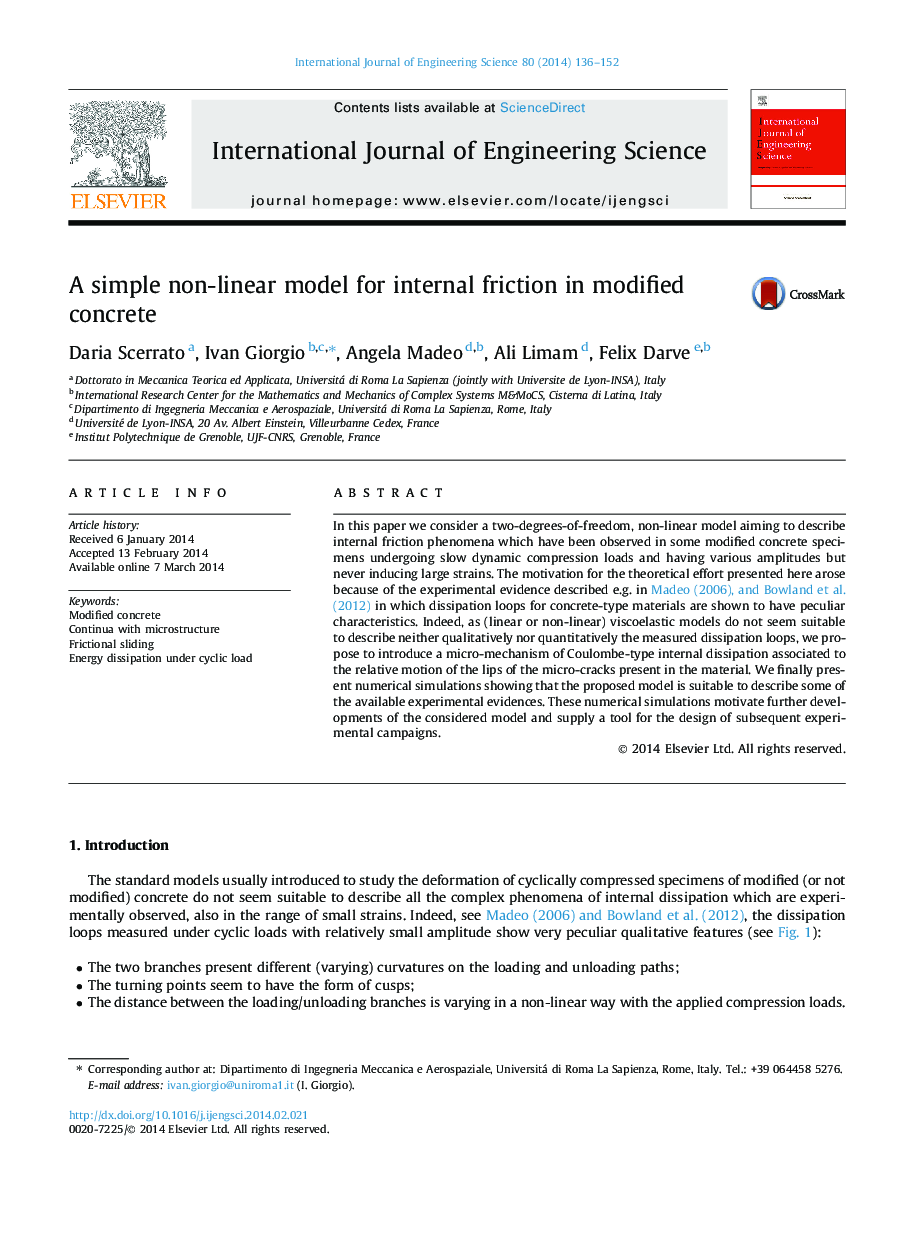| Article ID | Journal | Published Year | Pages | File Type |
|---|---|---|---|---|
| 824883 | International Journal of Engineering Science | 2014 | 17 Pages |
In this paper we consider a two-degrees-of-freedom, non-linear model aiming to describe internal friction phenomena which have been observed in some modified concrete specimens undergoing slow dynamic compression loads and having various amplitudes but never inducing large strains. The motivation for the theoretical effort presented here arose because of the experimental evidence described e.g. in Madeo, 2006 and Bowland et al., 2012 in which dissipation loops for concrete-type materials are shown to have peculiar characteristics. Indeed, as (linear or non-linear) viscoelastic models do not seem suitable to describe neither qualitatively nor quantitatively the measured dissipation loops, we propose to introduce a micro-mechanism of Coulombe-type internal dissipation associated to the relative motion of the lips of the micro-cracks present in the material. We finally present numerical simulations showing that the proposed model is suitable to describe some of the available experimental evidences. These numerical simulations motivate further developments of the considered model and supply a tool for the design of subsequent experimental campaigns.
